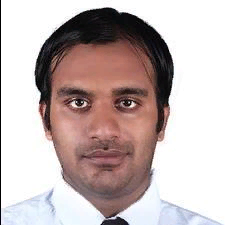
Tanuj Kumar Jhamb
Work place: Department of Computer Science and Engineering, National Institute of Technology Calicut, Kerala-673601, India
E-mail: tkjakaa@gmail.com
Website: nitc.academia.edu/tanujjhamb
Research Interests: Engineering, Computational Engineering, Computational Science and Engineering
Biography
Mr. Tanuj Kumar Jhamb, Master Degree Scholar, Department of Computer Science and Engineering, National Institute of technology Calicut, Kerala, India. He is recruited as Edison Engineer in General Electric, India. He received his Bachelor Degree from Punjabi University, Patiala, Punjab, India in 2013
Author Articles
A Review on Image Reconstruction through MRI k-Space Data
By Tanuj Kumar Jhamb Vinith Rejathalal V.K. Govindan
DOI: https://doi.org/10.5815/ijigsp.2015.07.06, Pub. Date: 8 Jun. 2015
Image reconstruction is the process of generating an image of an object from the signals captured by the scanning machine. Medical imaging is an interdisciplinary field combining physics, biology, mathematics and computational sciences. This paper provides a complete overview of image reconstruction process in MRI (Magnetic Resonance Imaging). It reviews the computational aspect of medical image reconstruction. MRI is one of the commonly used medical imaging techniques. The data collected by MRI scanner for image reconstruction is called the k-space data. For reconstructing an image from k-space data, there are various algorithms such as Homodyne algorithm, Zero Filling method, Dictionary Learning, and Projections onto Convex Set method. All the characteristics of k-space data and MRI data collection technique are reviewed in detail. The algorithms used for image reconstruction discussed in detail along with their pros and cons. Various modern magnetic resonance imaging techniques like functional MRI, diffusion MRI have also been introduced. The concepts of classical techniques like Expectation Maximization, Sensitive Encoding, Level Set Method, and the recent techniques such as Alternating Minimization, Signal Modeling, and Sphere Shaped Support Vector Machine are also reviewed. It is observed that most of these techniques enhance the gradient encoding and reduce the scanning time. Classical algorithms provide undesirable blurring effect when the degree of phase variation is high in partial k-space. Modern reconstructions algorithms such as Dictionary learning works well even with high phase variation as these are iterative procedures.
[...] Read more.Other Articles
Subscribe to receive issue release notifications and newsletters from MECS Press journals